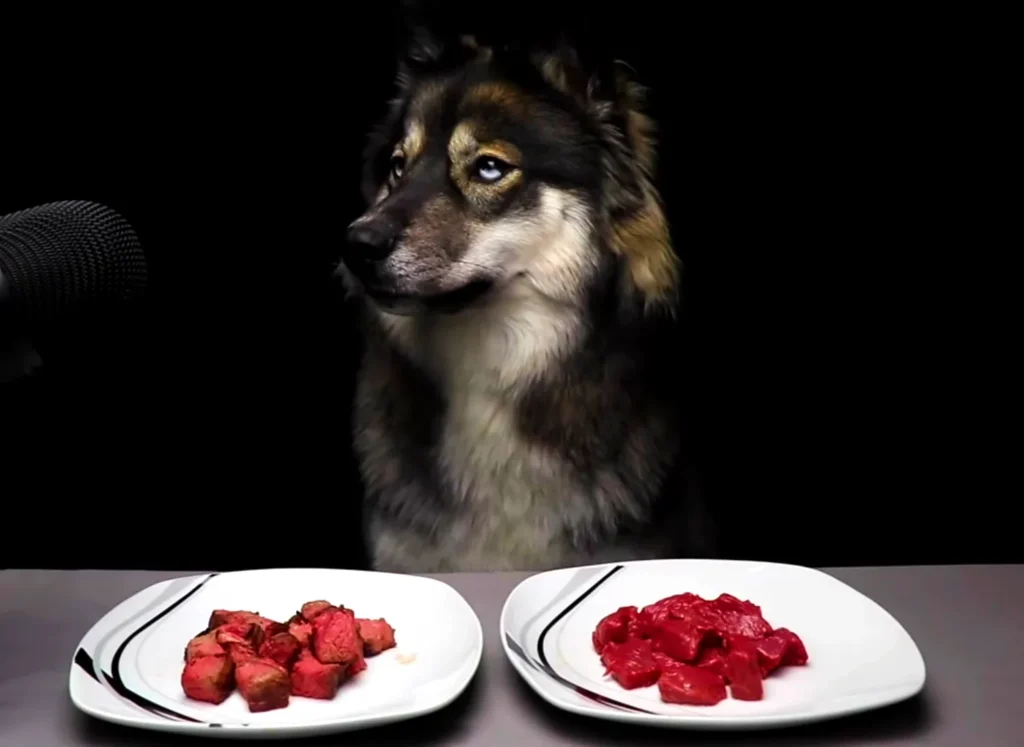
Hey dog owner! You must be confused about raw dog food. “To cook or not to cook, that is the question!”. Well, you don’t have to worry much about this now as in this article you will get answers to your concerning queries regarding cooking raw dog food.
As dog lovers, we have this inseparable connection with our pets and because of that, we want to make sure that they are healthy and happy. For that, we have to focus on their balanced diet so that what they eat is sufficiently nutritious for their body’s functioning. So, you have to be double sure about the diet that you are providing them with. It has to be rich in nutrients but at the same time, not over-rich. It has to be in conditions that don’t make it lose its nutrients. Let’s get started!
Understand BARF Before Raw dog food
Ever heard about the term BARF? I’m sure you would have come across it. So, raw dog food refers to a raw diet that is also called BARF which stands for Biologically Appropriate Raw Food. It consists of uncooked, natural ingredients that are usually consumed by wild canids even before the advent of commercial pet food. The idea behind raw dog food is to provide a nutritionally and biologically balanced diet to your dogs that mimic their ancestral diet.
What constitutes raw dog food?

Raw dog food usually consists of raw meat such as beef, chicken, turkey, etc. Then there are raw bones, which are non-weight-bearing and are essential for providing nutrients and they also promote the dental health of your dogs. Then there is organ meat like liver and kidney, and there are fruits and vegetables for providing additional nutrients and fiber. You must prepare a balanced raw diet with proper attention.
Now, the main question pops up, Can you cook raw dog food?
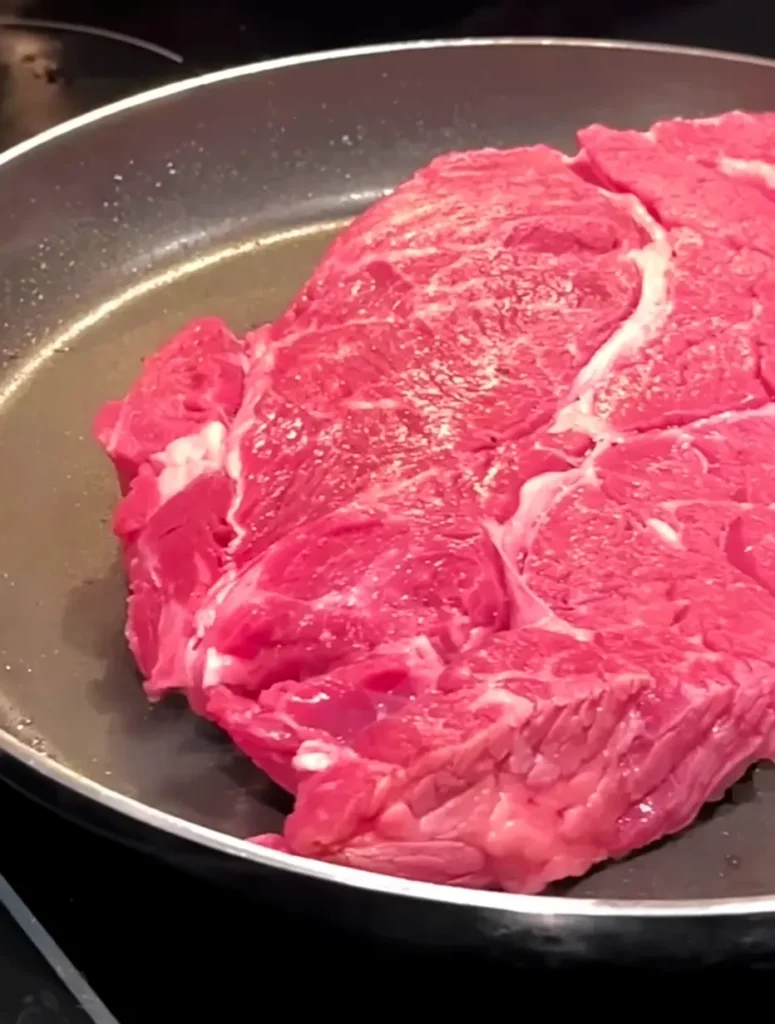
The term raw itself clears this confusion that it is supposed to be fed raw. So, Yes, there is no need to cook raw food it can be dangerous. Cooking can alter the nutrient profile of the food and may reduce the benefits that are associated with a raw diet. For instance, cooking bones can make them brittle, which is not biologically appropriate for your pet. Even if you still want to go for cooking, you must always consult with a veterinarian or a canine nutritionist to ensure the diet is nutritionally complete.
Raw food is meant to be raw:
The raw food is meant to be raw for your pet. Cooking can lead to the loss of essential nutrients for your dog food and its natural state preserves much of the nutrients. The same goes for enzymes as raw food is responsible for enzyme retention. It is also biologically appropriate which adds up to many benefits for your pet.
Nature’s nurturing rules:
The concept of a raw diet for dogs is an attempt to nurture dogs in a way that mimics their natural evolutionary diet. The Raw food is responsible for fostering a connection between the dog and its instincts. It is nature’s way of creating a balanced diet for your pets. Raw food requires you to tailor the diet according to specific needs and specific portions. This helps in close monitoring of your dog’s health. This encourages a nurturing mindset where you can engage in your dog’s health and dietary needs. Another nurturing benefit is that raw dog food involves hands-on processes such as selecting fresh ingredients, and handling and portioning meals.
dangers/ Cons of cooking raw food

Cooking raw dog food alters the nutritional content of your dog’s diet in various ways. It disturbs the balance that is needed for optimal health. I have done some research on the topic myself. Below is a detail of these dangers.
Loss of nutrients:
Cooking is known to be responsible for destroying enzymes that are present in raw food. These enzymes are efficient and needed for digestion. Similarly, some vitamins and minerals are heat-sensitive and can be lost or reduced during cooking. Most vitamins are also known to be water soluble and they are transferred out of the food and into the cooking liquid. So it becomes crucial that you retain the cooking liquid if you are opting for cooked food, but again it is something that is at risk and cannot be done without proper consultation from an expert.
Structural changes in protein:
Cooking can alter the structure of proteins. It creates changes in proteins at the molecular level. While some changes may make proteins more digestible, excessive cooking can denature proteins and it renders them less available biologically. So, again without involving the consultation of experts, you should not go for cooking raw food for your dog.
Fatty Acid oxidation:
You might have heard about the oxidation of fats and how they become harmful. Cooking or I should say, exposure to heat can lead to fat oxidation. Oxidized fats can be really dangerous as they are known to be a contributing factor to inflammation and other health issues. So, you should not mess with these.
Loss of beneficial Bacteria:
We have often read about bacteria that are beneficial because not all of them are harmful. Raw diets do have beneficial bacteria as well that may contribute to gut health. Cooking is known to destroy these bacteria and thus it changes the balance of the dog’s gut microbiome.
Bone consistency:
As discussed above, bones are supposed to be fed raw. They have essential nutrients and they promote dental health. When you opt for cooking bones, it makes them brittle and more likely to splinter. This creates a risk of injury or obstruction in the digestive tract of your pet. So, do not opt for cooking bones.
Loss of moisture:
Cooking is also responsible for reducing moisture in raw food. We know that raw foods are full of moisture and it is very much needed by your dog’s body. This leads to a decrease in overall hydration for the dog. For various body functions of your pet, it is crucial to maintain proper hydration.
Allergy and sensitivity:
We know that some dogs have sensitive stomachs and you do not know what can be potentially allergic for your dog. As cooking layers the structure of nutrients on a molecular level, it can create allergy and itching symptoms in many allergy and food-sensitive dogs. This can be very dangerous and again it pushes you towards seeking information about balanced diet information from an actual dog diet expert.
Formation of AGEs:
You might have heard about the advanced glycation end products known as the AGEs. They are a by-product of the cooking process. It depends on the cooking method as some methods are more prone towards it but cooking in general creates a risk for the formation of AGEs. These also include heterocyclic amines which, just like AGEs, have negative health effects.
Reasons and PROS of not to cook raw dog food?
Now that you know the potential dangers of cooking raw dog food. Let’s have a look at the benefits and reasons for opting for raw dog food instead of completely cooked.
Trend:
The most famous argument for feeding raw dog food is that it is a trend that existed even before the advent of commercial pet food. There is a whole history of raw feeding that tells that it is not a new trend but has been a part of the practice for decades by dog trainers, breeders, and pet owners who sourced fresh meat from butchers or abattoirs.
Nutritional benefits and balance:
Certain nutritional benefits can be claimed with the use of a raw diet. For instance, the diet leads to improvements in coat conditions, bowel movements, appetite, and vitality in pets. Focusing on fresh raw meat, bones, and a variety of vegetables or fruits can be very helpful in providing a natural and complete diet.
Freedom from the artificiality of processed foods:
You might be aware that processed foods usually come with artificial colors, preservatives, and other harmful additives. These cons are creating a shift among pet owners and they are moving towards homemade products or locally sourced ingredients. Processed food, from approved brands can also be nutritious but raw food, when balanced properly, wins the game.
Better balance than commercial products:
You know that many big brands claim that their commercial pet food products are completely balanced which can be the case, but when it comes to raw food, it is much more balanced. Why is this? This is mainly because of the meat protein. Raw feeding offers a variety of foods that deliver the necessary nutrition that is required by your pet’s body.
Diversity of raw feeding styles:
When it comes to raw food, there is diversity in feeding styles. Along with the BARF diet, you can also go for the RMB (raw and meaty bones) approach. However, the commonality is a base of fresh raw meat which is either on the bone or pre-ground, with natural bone content.
Home hygiene:
When it comes to hygiene, we know that nothing can beat the level of safety that is available at home. If you are responsibly following the raw feeding techniques such as properly washing hands, clean utensils, and careful preparation of raw foods, similar to one that you would opt for while preparing your meals, then you should rest assured.
Is uncooked, raw food better for dogs?
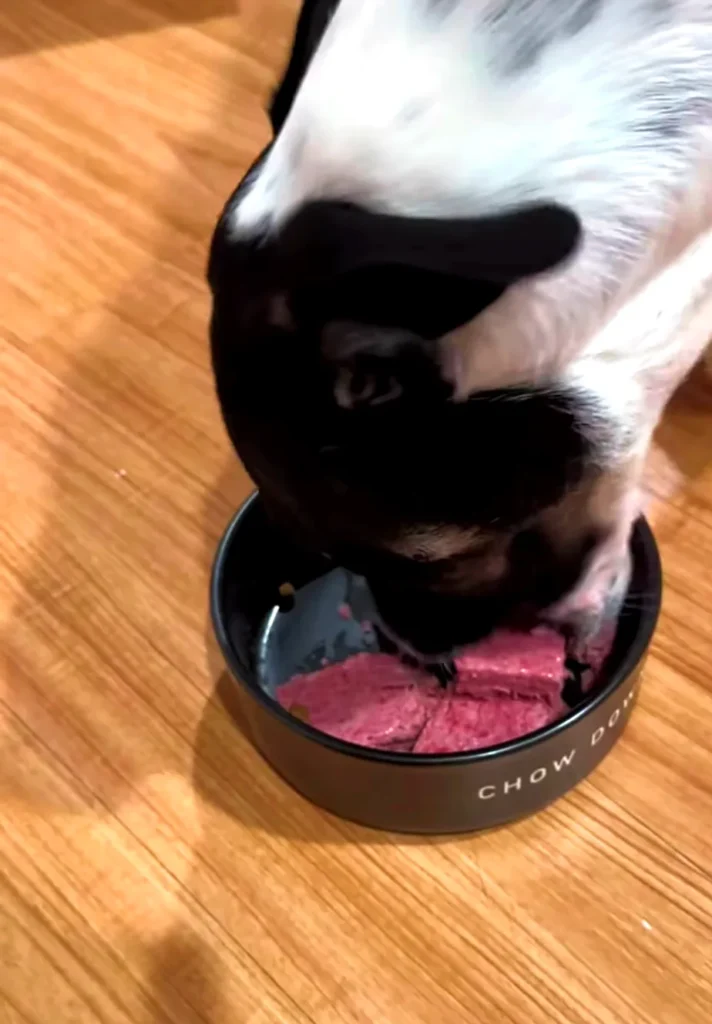
This topic is part of an ongoing debate that exists among the pet owners. While doing your research, you will come across many proponents and many critics of raw diet. However, they both have some valid points as the decision to feed raw food to your dog depends on various factors that include the health of your dog, the owner’s commitment while preparing food, and the potential risks that are often associated with raw food. Most of the difficulty that is linked with raw dog food is the availability of time and expense. You need a lot of time to create food for your dog as unlike commercial pet food, you have to create the balance of nutrients yourself. Secondly, raw food can be costly and at times can be a burden on your pocket. To create ease for you, I have done some research myself regarding the issue. I have come across some solid points from both groups which I have listed below.
Arguments in favor of raw food:
- It is biologically Appropriate as it mimics the natural and ancestral diet.
- It adds up to dental health because of the exercise of the jaw.
- Raw food contributes to healthier skin and coat in dogs.
- It helps in avoiding the use of artificial additives.
Arguments against raw food:
- Raw meat can carry harmful bacteria like Salmonella and E. Coli, which pose a great threat.
- Raw meat if not processed well, can contain parasites.
- A raw diet can also create bone-related concerns such as choking or intestinal blockages.
Can dogs eat uncooked, raw meat Easily?
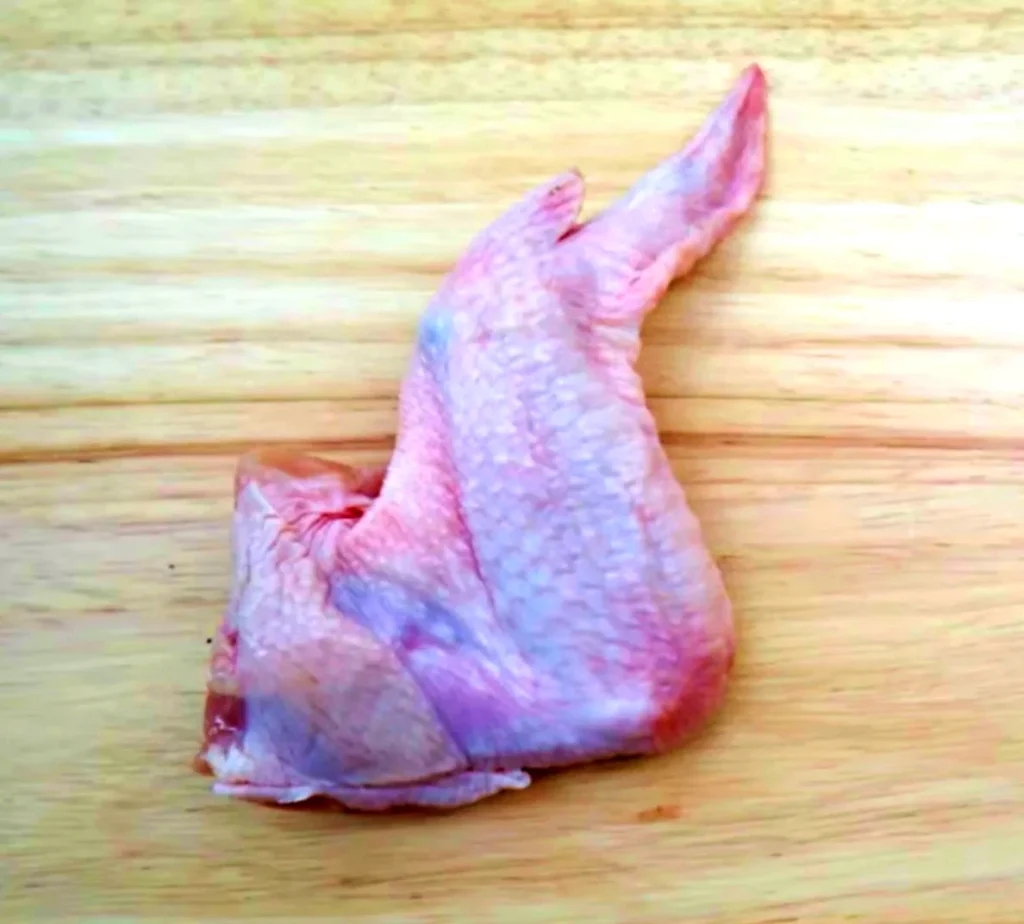
Yes, dogs are very much biologically capable of eating uncooked raw meat, and in fact, raw meat is a part of many balanced diets. The only thing that you have to worry about while feeding them raw is the bacteria related problem which is often thought to be present in raw meat. To prevent that, there are precautionary measures that you can read about.
How often should dogs eat raw meat?
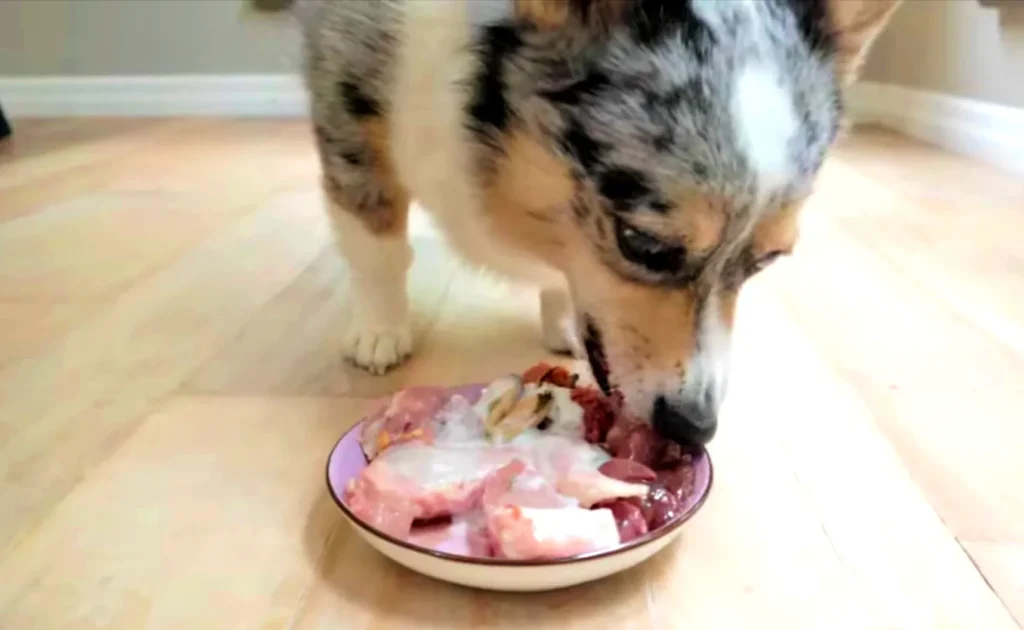
Feeding your dog raw meat is also a part of a big debate. If you do some research, you will find that being carnivores, dogs can digest raw meat. Some sources say that dogs can eat raw meat every day if it is a part of a balanced diet. The amount of raw meat to be fed also depends upon the size, age, weight, and activity level of your dog. This is because raw meat is known to be helpful for your dog’s immune system. Further, it boosts your dog’s eye health, muscle strength, digestion, and dental hygiene. However, this is something that you should not be deciding on your own. You should opt for a veterinarian as they are the best when it comes to your dog’s natural health. Also, most pet lovers feed their pets, commercial pet food and you cannot just give your pet something different the other day. You have to slowly go through the process of transitioning while switching the sources of food for your dog, and for that, you must consult with a professional vet first.
Before opting for any kind of food for your dog, it is strictly advised to consult a veterinary nutritionist. You should also strictly practice proper food safety measures that include handling and sanitation procedures to reduce the risks of bacterial contamination. Regular veterinary checkups can also help in monitoring your dog’s health.
is Raw Dog Food completely safe or not!
The major safety concern regarding raw food is potential health risks such as bacterial contamination. We know that uncooked food is more prone to bacteria and cannot be easily labeled as fully hygienic. However, proper handling, hygiene, and sourcing from EU-registered raw pet food producers can help in mitigating these risks. You just have to do some research on regulatory standards and find the right brands for your pet’s food that properly follow stringent regulations including microbe tests as part of their license.
DEFRA approved
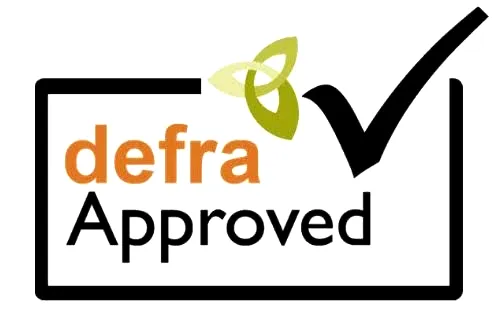
Opt for companies that are DEFRA-approved because they strictly abide by specific EU legislation that covers raw dog food manufacturers. For instance, these brands opt for microbiological testing for Salmonella and Enterobacteriaceae, on a batch basis with the help of micro research laboratories. There is also a restricted list of raw materials that cannot be a part of raw dog food such as feathers, pelts, hooves, etc, because of their pathogen risks. These are only allowed in dog food that is intended to be cooked. EU legislation also dictates that DEFRA-approved brands should use raw material that is gland-free as this eliminates the potential risk for animals to develop endocrine disorders such as hyperthyroidism, which has been commonly reported among dogs. Because of health risks, EU legislation has a zero-tolerance policy towards Salmonella in raw dog food products. DEFRA-registered raw food manufacturers are bound to send their samples so their raw food is verified after being tested for Salmonella and the results are then sent to APHA. So, opt for research and you can rest assured that DEFRA holds the responsibility of brands that are approved by it.
Heating your dog’s food
Now, heating up is quite different from cooking your dog’s food. It could be because it is frozen. Whether you have to heat the food, depends on what you are feeding and what are the guidelines related to it. So, always follow them. Generally, it is recommended for you to thaw frozen foods in the fridge with the help of a gradual process, rather than quickly heating things. You can also place the frozen food in water by sealing it in a plastic bag and just keep changing the water every 30 minutes. If you are still opting for a microwave, then follow proper guidelines that are chalked out by the manufacturer.
Mixing raw food and cooked food
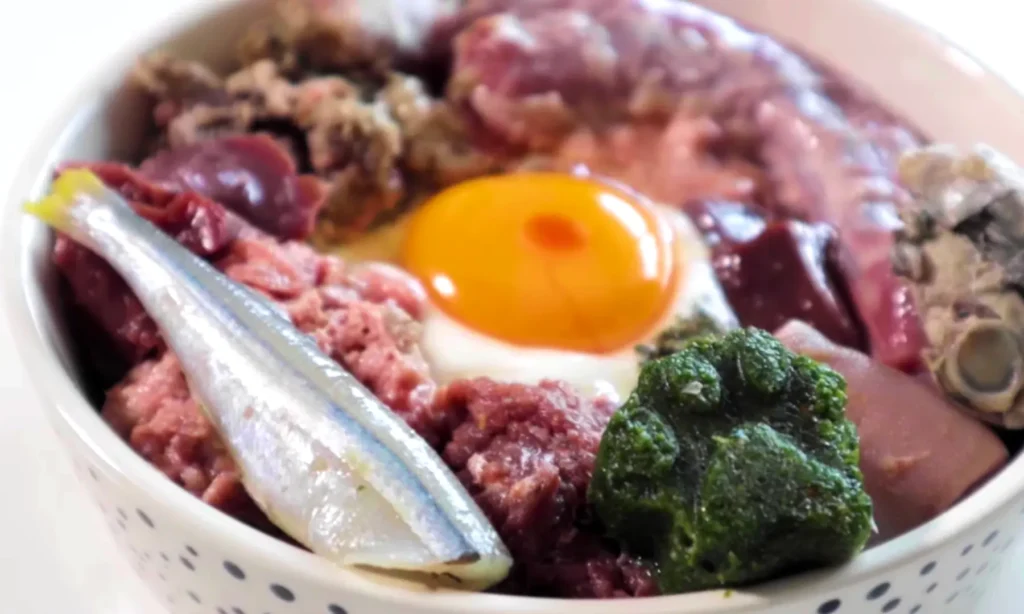
If you are still confused about the use of raw food or cooked food, then there is another solution for you. Yes, It is possible to create a mixed diet for dogs that contains portions of both cooked and raw food. This diet for your pet is known to be a “balanced” or “hybrid” diet. Why is it needed? The idea behind the mixed diet is very simple. It is used to combine the benefits of raw food such as preserving the nutrients and enzymes, and the safety that cooked food can provide. If cooked food is used as a topping over balanced raw food, it is not much of an issue. However, you have to be cautious because sometimes the food can become too rich in nutrients. So you have to stay balanced and avoid it. There are certain guidelines for mixing raw and cooked food that you should keep in mind before actually feeding your dog.
Guidelines for mixing:
- The first thing that pops up, always, is the repetitive emphasis on balanced nutrition. Mixing food for your pet, especially raw and cooked, is only because you want to create a balance in your dog’s food. This means that while doing that, you have to be careful while devising a balance of protein, fats, carbohydrates, vitamins, and minerals. All of these must be according to the requirements of your dog.
- If your dog is not used to a mixed diet. You cannot just quickly jump on it. For that, first consult a professional and then create slow adjustments in your dog’s food. Why am I insisting on this? Biologically, sudden changes in your pet’s diet can lead to digestion issues.
- While handling your dog’s food, always practice proper safety measures. These measures include cross-contamination and following hygiene guidelines.
Some examples of mixed raw and cooked diets:
There are certain combinations that you can go for while mixing raw and cooked food. A friend of mine personally opts for mixed diets and I gathered some of the combinations from her. They are listed below to give you an idea of how it can be done.
Raw meat with cooked vegetables and grains:
Raw meat can be in the form of turkey, chicken, or beef and it can be mixed with cooked vegetables such as carrots or broccoli, along with rice. Now, this meal is a mix of raw protein and cooked carbohydrates.
Raw meaty bones with cooked supplements:
We have learned above that raw bones are known to be good for the dental health of your dog. For that, you can use raw meaty bones and mix them with cooked vegetables, fruits, and grains. Now this diet will create an ease of digestibility from cooked plant-based diets along with providing good dental health to your dog.
Raw organ meats with cooked carbohydrates:
Raw organs are known to be very beneficial for your dog’s health. You can incorporate raw organ meats such as liver or kidneys along with cooked carbohydrates like sweet potatoes. Now this meal creates a balance in the nutritional profile and at the same time addresses the potential risks that are associated with the consumption of raw bones.
From the above-given examples, you would have gotten an idea about how mixed raw and cooked diets work. Again I will say that, the meals vary according to your dog’s health so do consult a nutritionist, always!
Conclusion
In conclusion, I will say that it is not recommended to cook the raw food, especially the one that is meant to be raw. Finding success with raw diets is all about approaching them with caution and complete awareness. Every dog is unique and dietary decisions should be made with careful consideration of individual health needs and consultation with an actual professional in the field.
